New floating lab – SeaOrbiter – can help exploring oceans!
Oceans cover more than 70 percent of the Earth‘s surface but we know very little about them. We know more about the surfaces of the Moon and the Mars than we know about the Earth’s oceans. Due to the pressure of the water, that is down there and almost zero visibility, it is a very challenging place to study. Year 2016 could be however the end of all reasons, why we cannot exposure oceans more.
SeaOrbiter, the floating laboratory, looks like a futuristic ship that has been called Starship Enterprise of the water. The person, who is responsible for this design, which is still on the papers, is French architect, Jacques Rougerie. He has well known history of making crazy dreams reality. Thanks to crowd-funding efforts through KissKissBankBank, Rougerie and his colleagues already have secured more than 350.000 Euro ($475.000). This is the first financial injection, that will allow them to start with construction at the end of the year. If the funding will continue (some of the money were provided by the French government), the team hope, that they will be able to finish SeaOrbiter in 2016.
SeaOrbiter, 58 meters (190ft) tall, will have in its laboratories only the best equipment and also wet lab, that will allow them to store specimens, before they can be transported to land-based stations. It will be analyzing countless amounts of physical, chemical and environmental parameters to give us a better look into the ecosystem of the open oceans. At the bottom of this vessel, there will be hangar, which will be home to couple of underwater exploration devices, that will be able to explore depth up to 6.000 meters (20.000ft).
Every year, scientists discover around 2.000 new species, which are living in the Ocean. SeaOrbiter is also giving them new hope, to explore even more about the new possible species or previously unknown submarine mountains.
SeaOrbiter is very similar to the International Space Station (ISS). Both are manned round-the-clock. Between 18 to 22 members of the research team can make the vessel their home at any period and will take part in prolonged missions. The diver, who live at normal atmospheric pressure can explore first 50 meters of the ocean, but members living in the special pressurized zone can explore depths of up to 100 meters for an extended period of time.
Even though, SeaOrbiter is still on the paper, the designing team has already made their plans for the future. They want to create a whole fleet of ships, so that this craft can sail every ocean. Who knows, when this will happen, but eventually it will and I am really looking forward to know, what are oceans hiding. Are you?
SeaOrbiter: The Floating Laboratory (Movie Trailer):
[sc:ad-text]
More pictures of SeaOrbiter:
Source: SeaOrbiter.com
Check out also: Underwater Hotel & House
[sc:end t=”SeaOrbiter: The Floating Laboratory”]
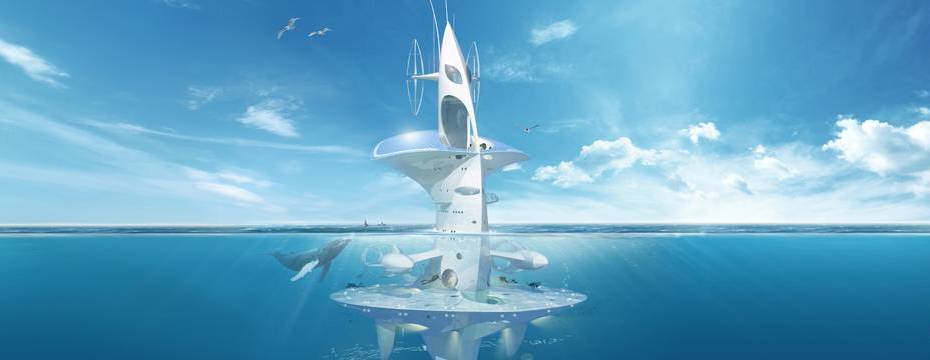
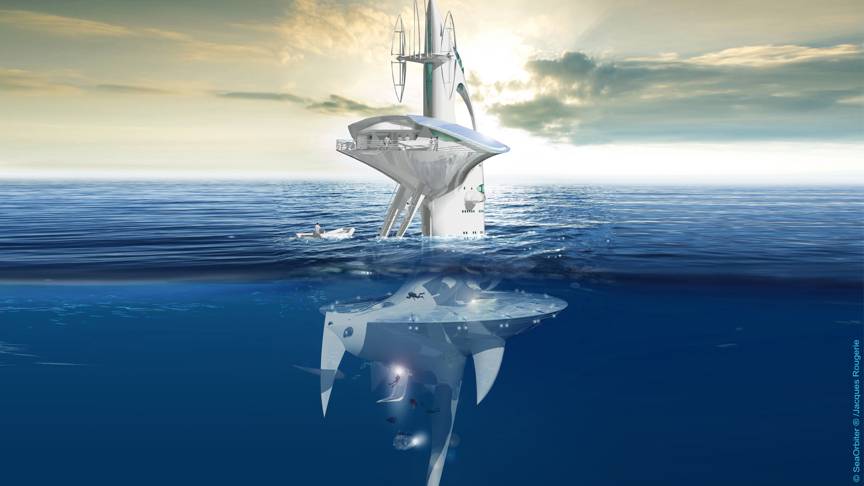
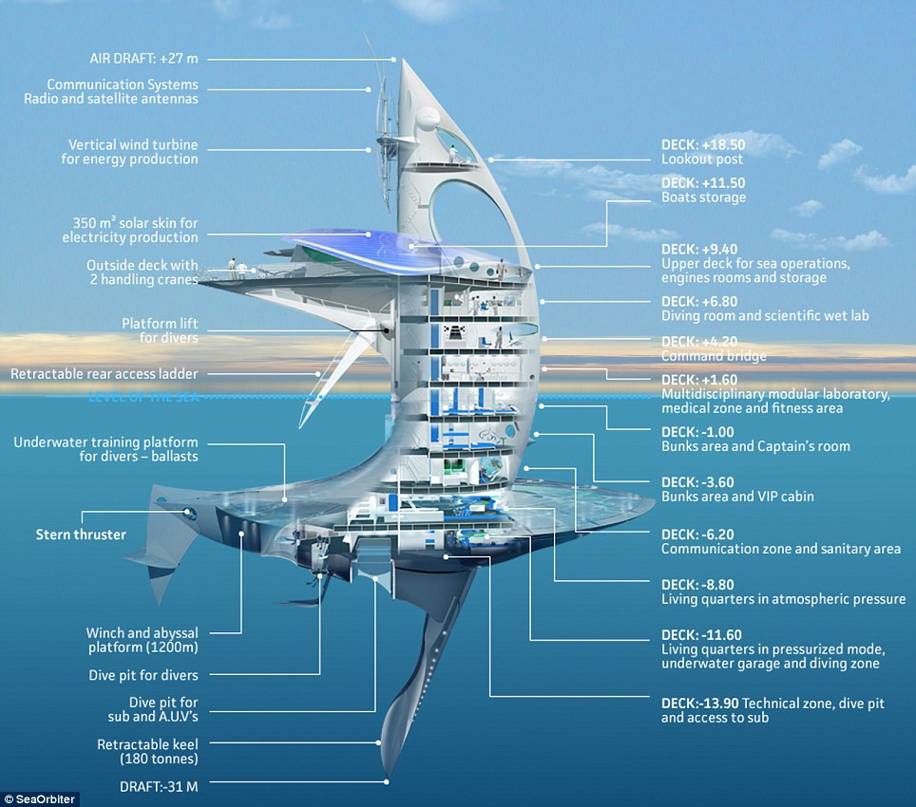
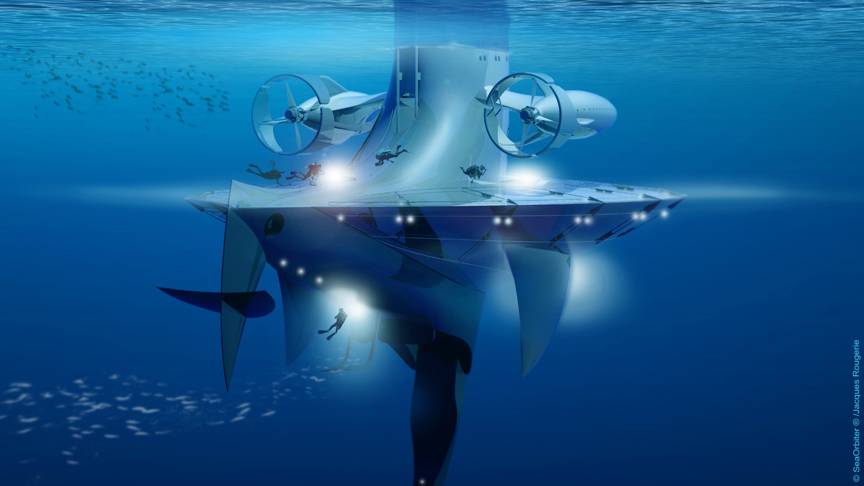
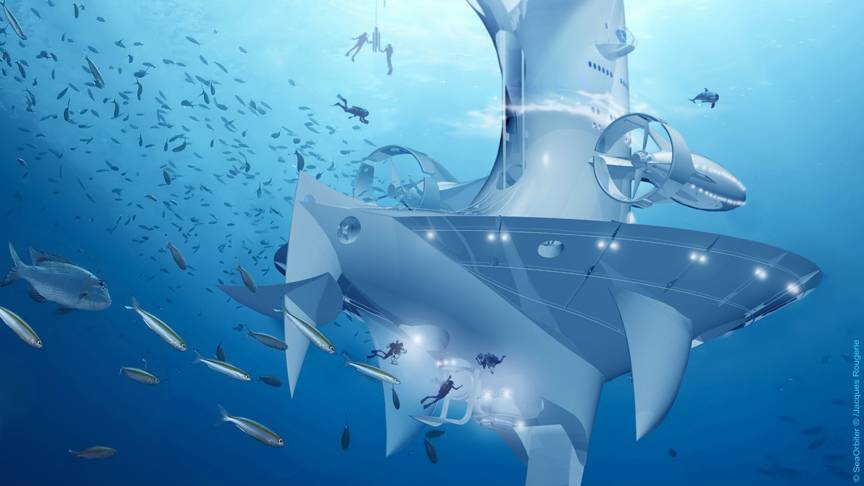
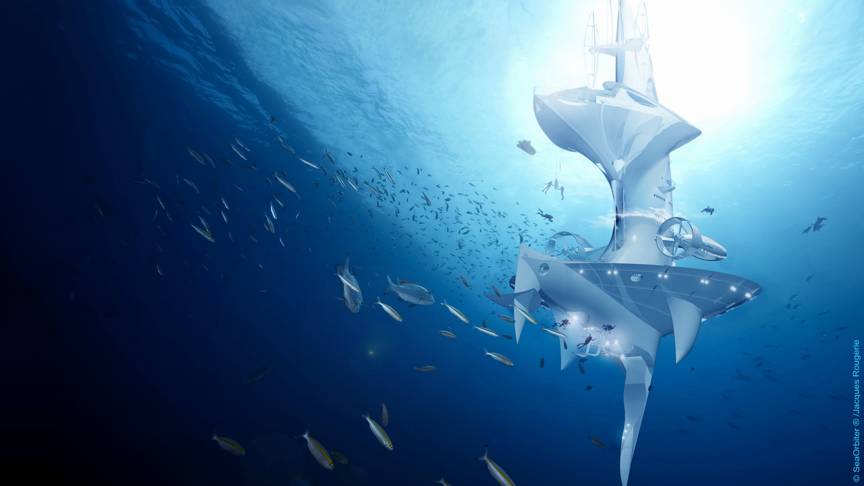
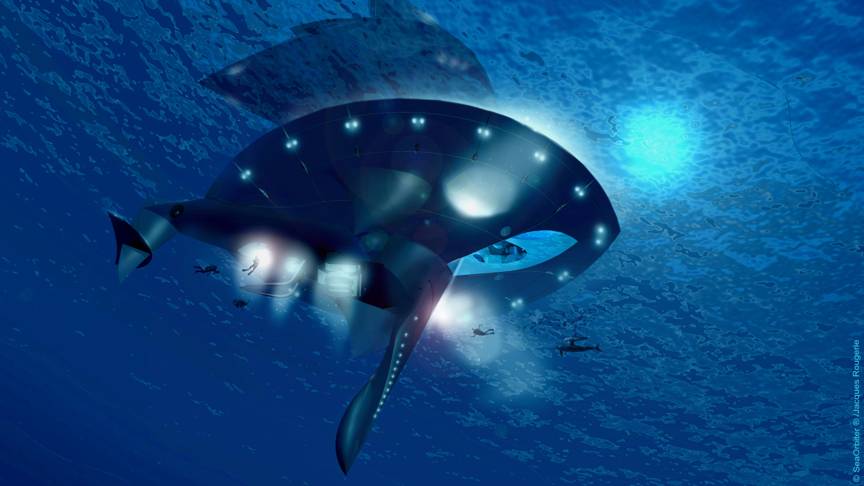
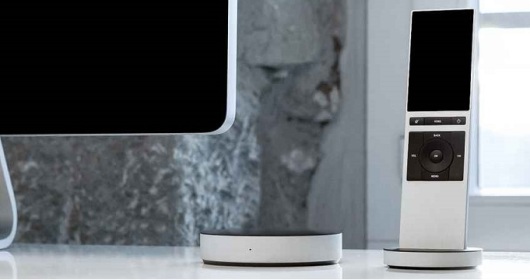

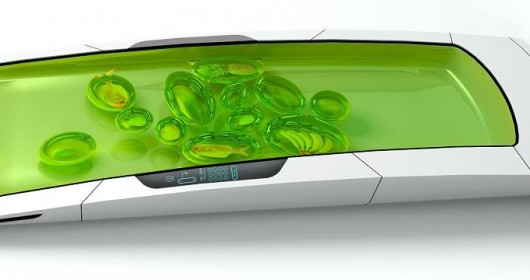



Leave a Reply